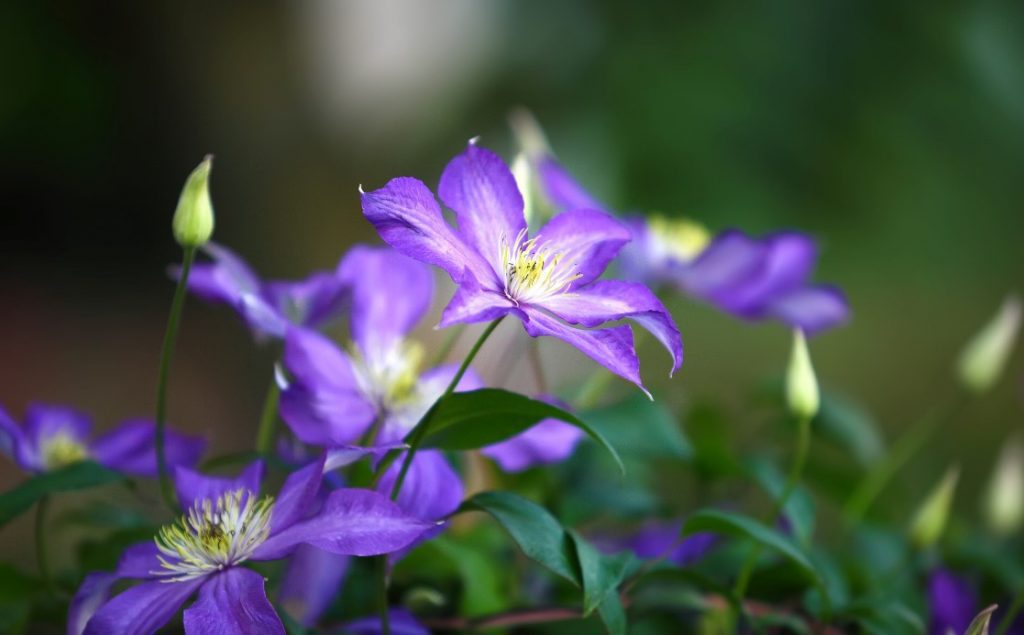Spring Clematis
Ideal for covering a fence, pergola, or bare wall, spring clematis are at their best this month.
Is that boundary a bit of a dead spot, all fences and no flowers?
Is that wall more brick than blossom?
There’s a distinct shortage of choice when it comes to spring-flowering climbers, so thank goodness for this group of colorful, tough-as-nails clematis.
Their nodding, often double flowers, maybe less flamboyant than those of their larger-flowered relations, but they open earlier and in great numbers over many weeks.
Atragene Group
The wild species – you’ll sometimes see them grouped under their botanical heading, Atragene Group – are mainly blue, but there are other colors too!
And they’re usually followed by silky, silvery seedheads to add a second season of interest later in the year.
All are easy to prune. In fact, you can get away with not pruning them at all.
Tidy them by snipping out dead growth immediately after flowering if you like or if they get out of hand; you can be more severe.
They’re resistant to clematis wilt, too. Like most clematis, these scramblers cling to their
supports by twining their leaf stems, so they need something to attach to.
Trellis is ideal; steel lattice works well, as does stout plastic mesh in neutral tones. So no more bare walls, and they’re good to direct into spring-flowering shrubs.
Clematis Info
- Position: in any open but not necessarily sunny site. Happy in north- and east-facing situations.
- Care: Provide good support from the start. Tidy up lightly after flowering if necessary. Rejuvenate by pruning harder immediately after flowering.
- Problems: None, although birds sometimes peck out the young flower buds.
Planting
Loam-based composts are necessarily heavier than their ‘multi-purpose’ counterparts, but if you can rise to the weight-lifting challenge or have plenty of strong, willing friends or leave your pots in situ for the season, your plants will repay you with strong, robust growth.
Alternatively, ‘multi-purpose’ composts are a popular option, and if their limited supplies
of nutrients are supplemented by fertilizer or by regular applications of liquid, organic
feed throughout the growing season; then results should be sterling.
Using garden soil or your own compost may sound like a cheap and resourceful substitute, but both are full of pests and diseases, fine when interacting as part of a system in the soil in a bed but problematic in a pot.
Don’t forget that plants in pots rely on you for their survival, whether they are annuals,
perennials or shrubs.
They must be kept watered and will benefit from an occasional liquid feed, preferably with a balanced organic fertilizer.
It may seem cavalier to extol container growing when we are all so drought-conscious, but there are simple ways of minimizing the amount of water needed.
Both lining ornamental pots with plastic (compost bags with a few holes are ideal) or planting into plastic pots to drop down inside more decorative outer containers help retain water.
Though deadheading is important to maintain flower production, it’s worth allowing a few flowers to set seed to collect.
You won’t be able to suppress a smile of satisfaction when you look at one of your containers in its late summer glory and recall that you grew everything in it yourself.






















